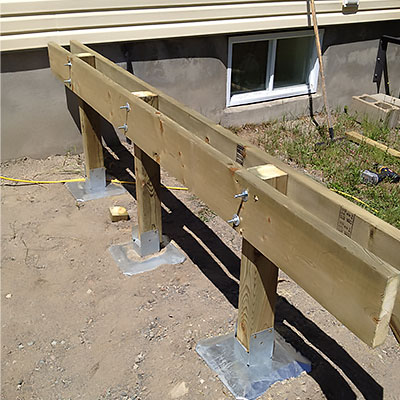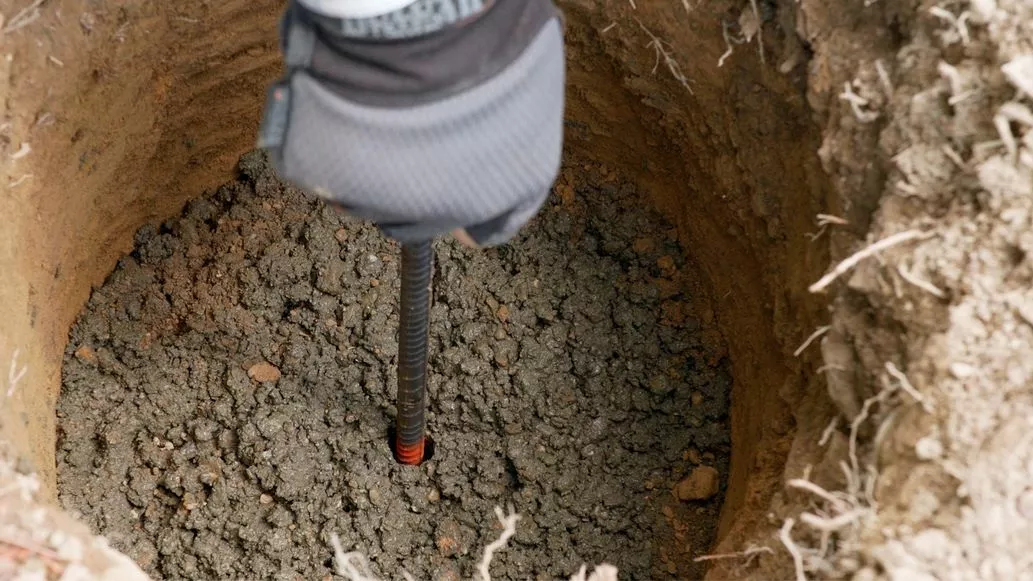Make Sure Stability and Durability With Properly Installed Deck Footings
Deck footings may not be the most extravagant facet of deck building and construction, however they play a crucial duty in making certain security and longevity. In this conversation, we will certainly discover the significance of correct deck grounds, factors to consider during installation, different types of footings offered, step-by-step installment overview, and upkeep ideas for making certain long-lasting footings.

Significance of Correct Deck Footings
Why are appropriately installed deck grounds important for the security and long life of your deck? Deck grounds are the foundation on which the deck relaxes, transferring the lots from the deck to the ground.
To start with, properly set up deck grounds disperse the weight of the deck equally, protecting against any unequal settling or sinking. This is particularly essential in locations with unstable soil, as it aids to reduce the risk of the deck shifting or collapsing. In addition, well-installed grounds ensure that the deck remains level, avoiding any kind of architectural damage that can take place when a deck ends up being uneven.
Secondly, appropriately set up grounds supply a solid anchor for the deck, avoiding excessive motion and guide. This assists to maintain the architectural honesty of the deck, lowering the risk of mishaps or injuries. It likewise decreases the damage on the deck, enabling it to endure the aspects and normal use for a longer time period.
Variables to Think About for Deck Footing Installment
When setting up deck grounds, there are a number of important variables to consider for appropriate installation. These variables can substantially affect the stability and long life of your deck. First and leading, you require to establish the kind of soil on which the deck will be constructed. Various soil types have various load-bearing capabilities, so it is essential to perform a dirt examination to make sure the footings can sustain the weight of the deck and its residents. In addition, the area and layout of the deck should be meticulously prepared to avoid any type of obstacles such as trees, utility lines, or underground pipelines. It is also crucial to consider the regional environment and climate condition, as these can influence the toughness of the grounds. For example, areas with a high water table may require extra procedures to stop water damage. The size and product of the grounds ought to be picked based on the size and weight of the deck, as well as the regional building codes and policies. By taking into account these factors, you can ensure the correct installment of deck footings and delight in a stable and lasting deck.
Sorts Of Deck Footings to Select From
There are numerous different kinds of deck footings offered for you to select from. Each type has its own advantages and drawbacks, so it's vital to consider your particular needs and the problems of your deck prior to deciding.
One common sort of deck ground is the concrete footing. This involves digging holes in the ground and pouring concrete right into them to create a strong structure. Concrete grounds are long lasting and provide excellent security, making them suitable for decks in areas with tough dirt problems or high wind loads.
An additional choice is the helical pier footing, which is composed of a steel shaft with helical plates that are screwed into the ground. These footings fast to install and click for info can be utilized in different soil kinds, including sandy or clay dirts. They are also flexible, allowing for simple progressing of the deck.
Sonotube grounds are one more prominent selection. These grounds are produced by placing a cardboard tube in a hole and filling it with concrete. Sonotube footings are fairly simple to set up and offer adequate stability for smaller decks or in areas with less demanding dirt problems.

When choosing the type of deck footing, it's vital to consider elements such as dirt problems, deck dimension and weight, neighborhood building regulations, and individual choices. By picking the appropriate ground type, you can make sure the stability and durability of your deck.
Step-by-Step Overview for Setting Up Deck Footings

Establish the place: Start by noting the exact position of each ground using risks and string (Deck Footings). Take into consideration any type of local building codes or regulations concerning problem distances
Dig the openings: Use a post hole digger or an auger to dig the holes for the footings. Usually, a deepness of at least 36 inches is advised for security.
Degree the holes: Make certain that the bottoms of the openings are degree (Deck Footings). This can be accomplished by utilizing a degree or a go right here straight board across the top of the holes
Include crushed rock: Location a layer of gravel at the end of each opening to enhance drainage and avoid the footing from penetrating the dirt in time.
Place the footing types: Put the footing develops right into the holes, ensuring they are centered and degree. Usage risks to safeguard them in area.
Mix and pour concrete: Adhere to the guidelines on the concrete mix bag to prepare the concrete. Pour the concrete right into the footing types, filling them totally.
Smooth the surface: Make use of a trowel to smooth the surface area of the concrete and remove any type of air pockets. Enable the concrete to heal according to the producer's guidelines.
Maintenance Tips for Resilient Deck Footings
Correct upkeep is critical for guaranteeing the longevity and security of deck footings. By regularly examining and preserving your deck footings, you can protect against damage and prospective safety and security threats.
Normal cleaning is also vital for keeping deck footings. Debris, plant life, and dirt can collect around the footings, which can bring about moisture build-up and degeneration. Cleaning the footings on a regular basis, making use of a stress or a brush washing machine, can aid stop these problems and extend the life-span of your Click This Link deck.
In addition to cleaning, it is important to maintain the area around the grounds clear of any blockages. Stay clear of stacking items versus the grounds or allowing plants to grow too near to them. These blockages can catch wetness and trigger the footings to wear away gradually.
Finally, routine resealing of the footings is suggested to shield them from dampness and other ecological factors. Applying a waterproof sealer can aid protect against water damages and prolong the lifespan of the footings.
Conclusion
Finally, appropriate installment of deck footings is important for making sure stability and long life of your deck. Aspects such as soil kind, load ability, and neighborhood building ordinance require to be thought about when picking the right kind of deck footings. Following a step-by-step guide for installment and regular maintenance will certainly help to ensure the footings remain long-lasting and resilient.
In this discussion, we will check out the significance of correct deck footings, aspects to consider throughout installation, various kinds of grounds readily available, step-by-step setup overview, and upkeep pointers for ensuring resilient grounds. Deck grounds are the structure on which the deck rests, transferring the tons from the deck to the ground.One typical type of deck ground is the concrete ground. Place the footing kinds: Place the footing forms right into the holes, ensuring they are centered and degree.In final thought, proper setup of deck footings is important for ensuring stability and long life of your deck.
Comments on “Safeguard Foundations, Lasting Impacts: Understanding the Art of Deck Footings Installation”